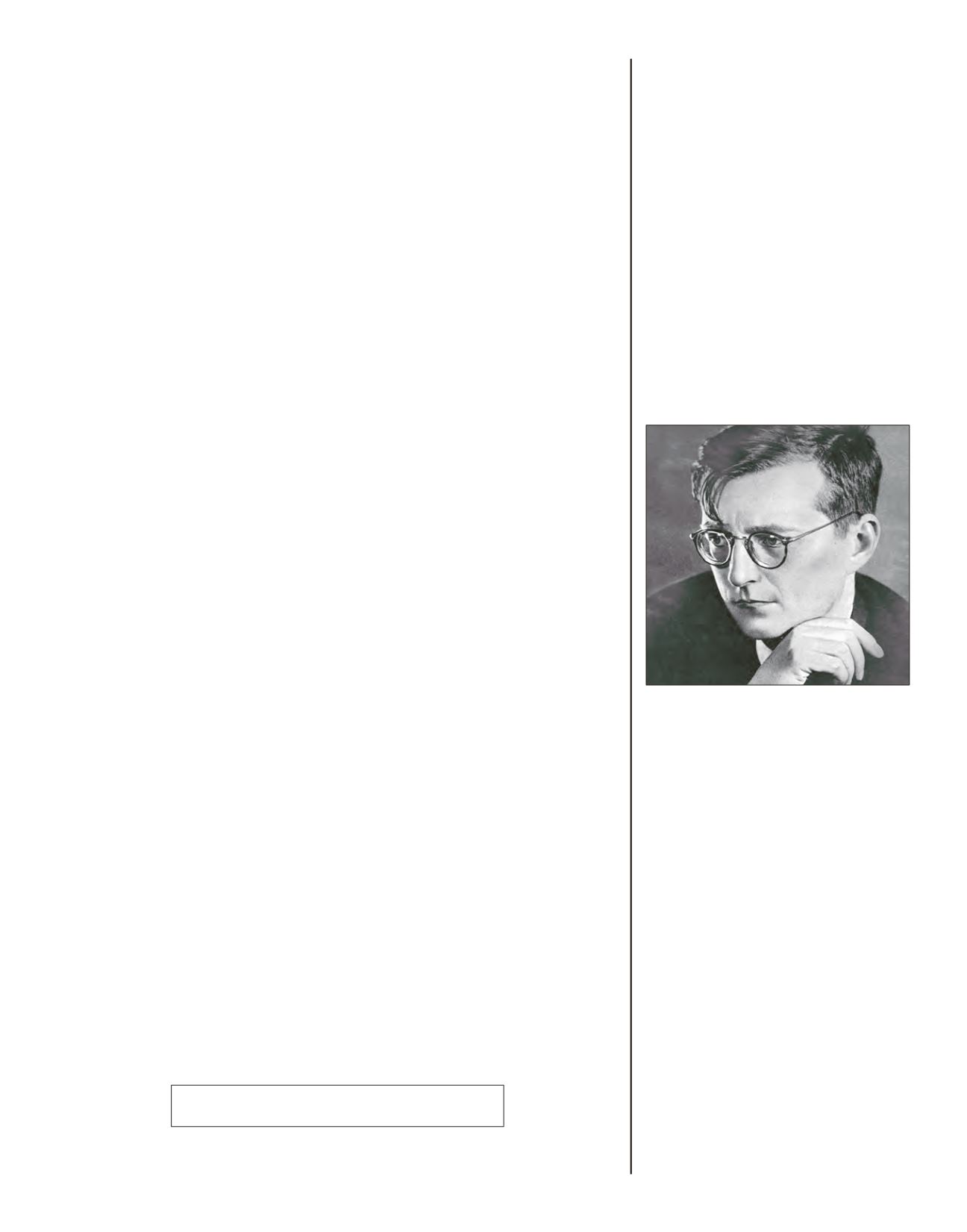

6:00 PM TUESDAY, JULY 24, 2018
BENNETT GORDON HALL
MISHA DICHTER,
piano
ARGUS QUARTET
STELLA CHEN,
violin
‡
JASON ISSOKSON,
violin
DANA KELLEY,
viola
JOANN WHANG,
cello
SHOSTAKOVICH
Piano Quintet
Prelude: Lento [
attacca
]
Fugue: Adagio
Scherzo: Allegretto
Intermezzo: Lento [
attacca
]
Finale: Allegretto
DVOŘÁK
Piano Quintet No. 2
Allegro ma non tanto
Dumka: Andante con moto
Scherzo (Furiant): Molto vivace
Finale: Allegro
There will be no intermission in this program.
‡
Stella Chen is substituting for Clara Kim at this performance.
Ravinia expresses its appreciation for the generous support of
Sponsor
Lynne and David B. Weinberg
.
Celebrating the 50th anniversary of Misha Dichter’s Ravinia debut
DMITRI SHOSTAKOVICH (1906–75)
Piano Quintet in G minor, op. 57
Dmitri Shostakovich had become a fully “re-
habilitated” composer by the summer of 1940,
when he wrote his only work for piano and
string quartet. The condemnation of his opera
Lady Macbeth of the Mtsensk District
and the
subsequent public censure of his music (1936)
remained a distant, but still embittering mem-
ory. Shostakovich had since restored himself to
good graces with the Union of Soviet Composers
with acclaimed premieres of Symphonies No. 5
(1937) and No. 6 (completed in 1935, though not
performed until 1938). Official recognition of
his music reached new heights when the Stalin
Prize was awarded to the Piano Quintet in 1940.
Party newspapers issued gushing reviews.
Prav-
da
declared the quintet a demonstration of “full
maturity of power, a work that opens new vistas
to the art.”
This music actually began as the composer’s sec-
ond string quartet. Shostakovich explained to
Isaak Glikman, a critic and his lifelong friend,
his self-serving reason for adding a piano part:
“So that I could have the chance to perform my-
self and thereby travel on concert tours. Now
the Glazunovs and Beethovens [string quartets]
won’t be able to travel without me—and I’ll get
a chance to see the world.” Shostakovich, an ac-
complished pianist and former entrant in the
First Chopin Piano Competition, joined the
Beethoven Quartet in the premiere on Novem-
ber 23, 1940, at the Moscow Festival of Soviet
Music. The audience received the quintet with
such tumultuous applause that the scherzo and
finale were given encores.
Much of the Piano Quintet in G minor, op. 57,
features Baroque techniques, prompting the
common description “neo-Bach.” Shostakovich
connected the opening two movements—a pre-
lude and fugue—in traditional Baroque fashion.
His interest in writing these types of movements
dates back to the 24 Preludes, op. 34 (1932–33),
modeled on Bach’s
Well-Tempered Clavier
. The
Prelude
itself is subdivided into three contrasting
Dmitri Shostakovich
JULY 23 – JULY 29, 2018 | RAVINIA MAGAZINE
109









